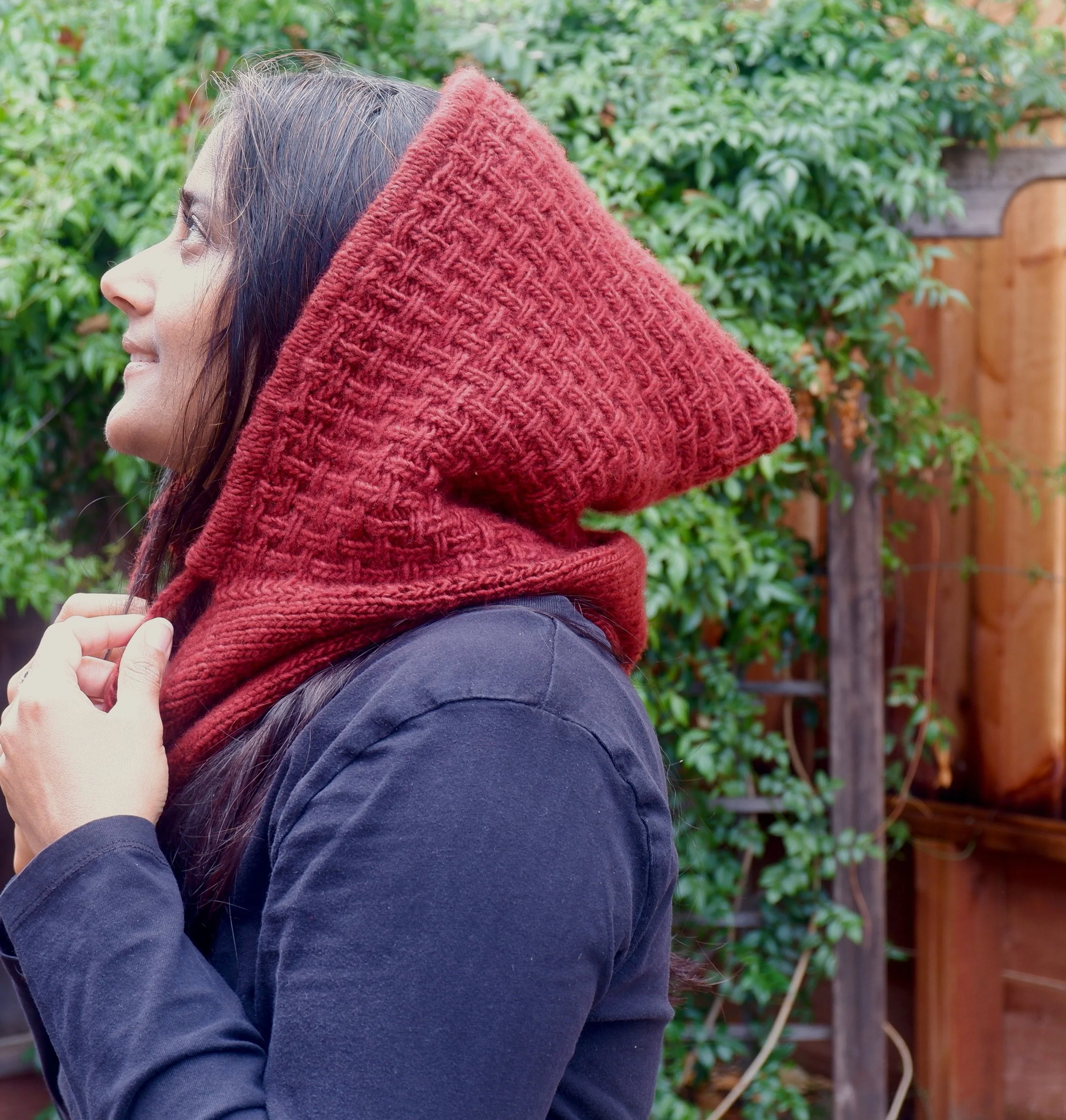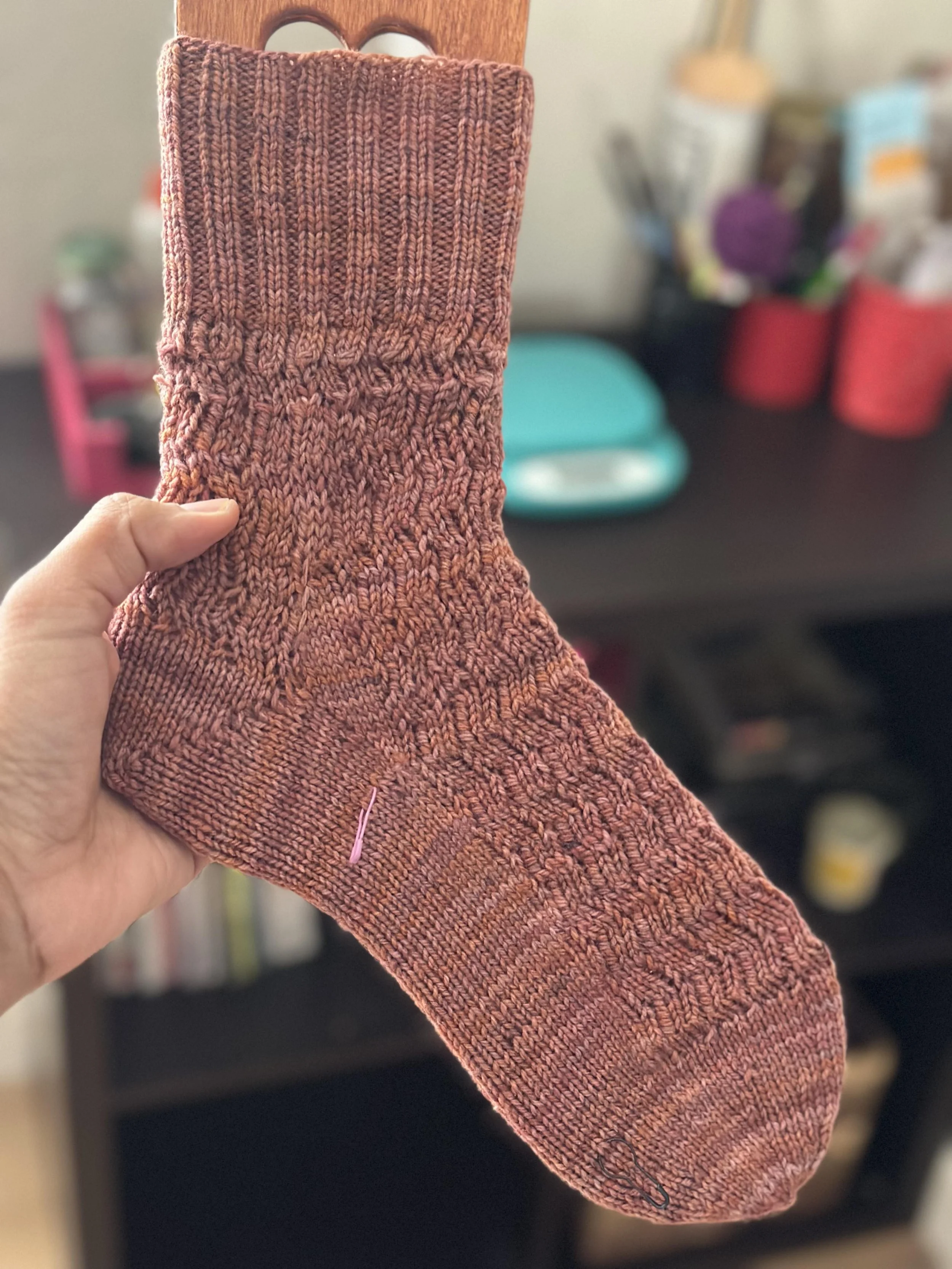Catching ideas with Craftdoodling Designs
Kavitha is holding her Nasha 2 shawl. ‘Nasha’ is a Hindi word that is used to describe the state of intoxication and excitement in general and is very apt to describe the mood of Holi.
Kavitha Raman aka Craftdoodling Designs is a knitwear designer who fell in love with knitting after seeing just a glimpse of it in a movie. She taught herself to knit in the south of India, where the local language Tamil does not even include a word for it. In fact, searching and asking for knitting supplies, she only ever came across crochet hooks.
Nowadays, Kavitha is a full-time knitwear designer. 50 patterns are currently listed on her Craftdoodling Designs’ Ravelry page, including the Shirin shawl, which I featured in my bobbles round-up. Her designs are gorgeous with simple and elegant details that make the mostly accessories very special everyday pieces, in my opinion.
Living the designer life
Kavitha used to work in a corporate job in India, and with the birth of her second child, she decided to focus more on her family life. During this time, she started selling some handmade items, but having an engineering background, she missed the maths problems and programming side of things. And so, designing and writing her own knitting patterns became a new outlet and area of discovery for her.
Unsurprisingly, Kavitha’s design process often starts with what she would like to wear, knit or work on herself. Ideas can come from what she read, a motif she saw in nature, an emotion or art works by fellow knitters. “Inspiration is all around!” Kavitha says but at the same time: “Imagining is easy. Ideas are easy. But sometimes to reach there, it takes a lot of learning.”
Craftdoodling Designs’ Ansh Cowl, meaning a ‘little part of something’ in Sanskrit. Kavitha hopes Ansh would play a little part in bringing some fun to people’s knitting and wardrobe.
“Imagining is easy. Ideas are easy. But sometimes to reach there, it takes a lot of learning.”
It shows the stamina and willpower needed, which Kavitha clearly has, to see something through from inspiration to publishing a final pattern. She tells me: “My friend, who is also a crocheter, used to say: Ideas are things that are floating in the air. Whoever catches it and sticks with it, gets to see the end.” It immediately reminds me of a story in Elizabeth Gilbert’s book ‘Big Magic’, where the idea for a book is transmitted from Gilbert to her friend (through a hug no less), who ends up writing it and witnesses the idea coming to life.
Knitting in India
Thinking of knitting, India is not the first country that comes to mind. But why is that? “Where I grew up, the climate is hot, hotter, hottest,“ Kavitha tells me. So, wearing wool is limited to a very short period of rainy weather or northern India, where it can get very cold. Cotton, with its natural fibres and breathability, and crochet, with its open stitch patterns, are much more conducive in the heat. At the moment, for example, crochet tops with a lot of room to breathe are really popular, Kavitha explains. But generally, fingering weight garments (both knitted and crochet) using plant fibres, like cotton, linen, silk or modal fibres, like viscose, do well. Additionally, and similarly to other parts of the world, knitting and crochet are increasingly popular and claiming their space as therapeutic hobbies in India.
Courage to represent
In one of our very first online interactions, Kavitha had picked up on something in my blog that is very important to me: diverse representation. It meant a lot to me that she mentioned it and asked about her own experience in a predominantly white space Kavitha shares that it took a lot of courage at the beginning to put herself ‘out there’. “When I put my picture on Instagram and scroll… It took me a long time for me to not think that something is off.”
Craftdoodling Design’s Matte Hood
“When I put my picture on Instagram and scroll… It took me a long time for me to not think that something is off.”
Posting a picture online is one thing. But when Kavitha got a crochet teacher position at her local yarn shop on the West Coast of the US, where she currently lives, her experience became even more real. People regularly mistake her for a student: “The image in people’s minds is that a middle-aged white woman will come and give the class.” She says this gently but very matter-of-fact. We both know she is right.
Writing heals
For me, it is very humbling to listen to Kavitha’s experiences and it makes me even more aware of my own privilege as a white woman. I want to help make our society more equal. Where we don’t have preconceived ideas about what a teacher looks like but rather what kind of qualities, skills or values they bring to the job. I hope that I can contribute to this even just a little bit through my writing.
“I cannot function without it, so I was wondering why not start writing intentionally? Writing heals me.”
Our love for writing is something Kavitha and I share. Even as a knitwear designer, her day-to-day work still includes a lot of writing - from social media posts to long-form blog articles to the patterns’ instructions. Writing is a way for Kavitha (and myself for that matter) to make sense of the world and process thoughts and emotions. Kavitha says: “I cannot function without it, so I was wondering why not start writing intentionally? Writing heals me.”
New sock design - coming soon!
What’s on Kavitha’s To-Knit-Lists?
Her own upcoming sock pattern




